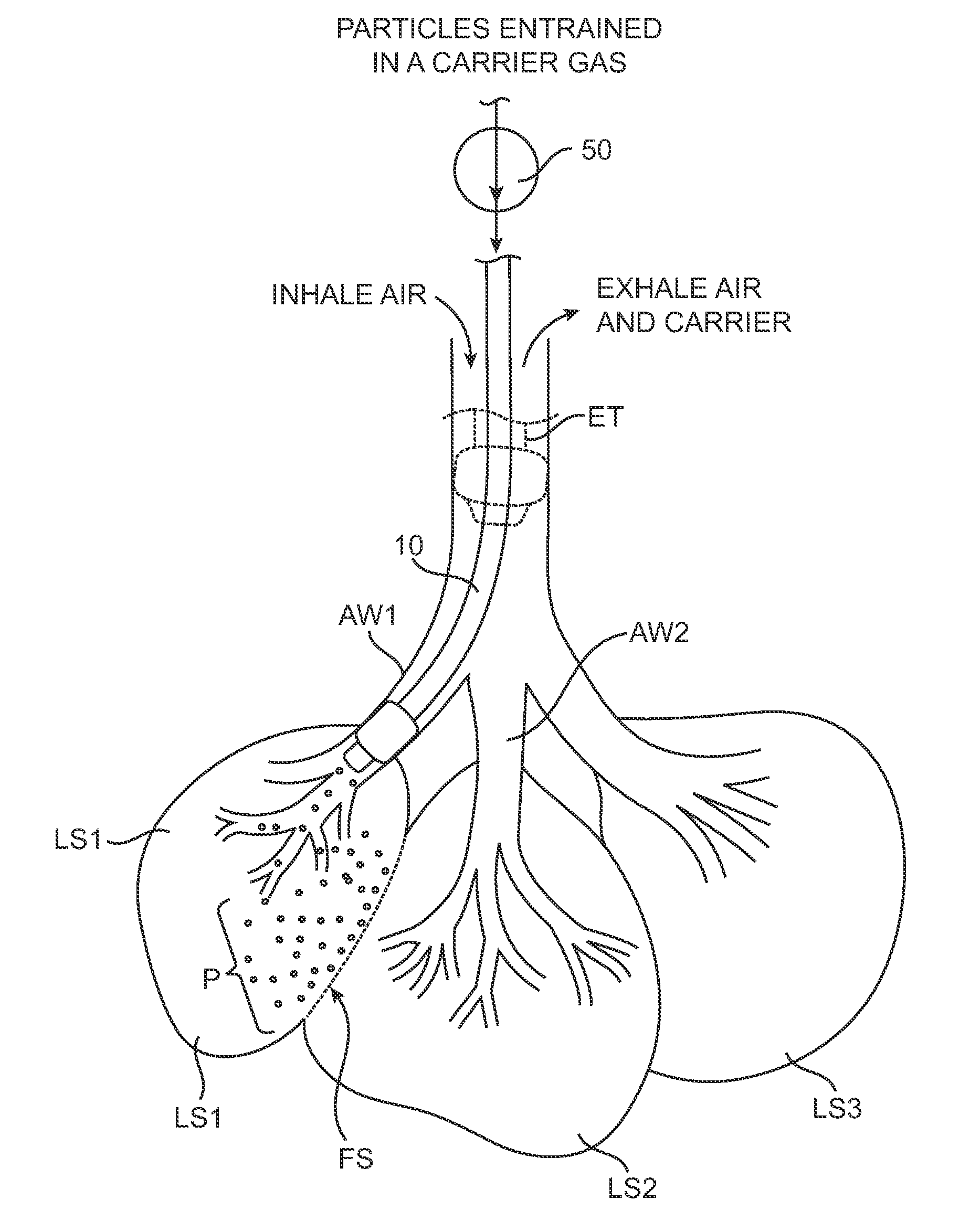Methods and systems for occluding collateral flow channels in the lung
a collateral flow channel and occluding technology, applied in the field of medical methods and equipment, can solve problems such as the collapse of the channel structure, and achieve the effect of facilitating the formation of the particle circulation
- Summary
- Abstract
- Description
- Claims
- Application Information
AI Technical Summary
Benefits of technology
Problems solved by technology
Method used
Image
Examples
Embodiment Construction
[0027]Referring now to FIG. 1, an endobronchial particle delivery catheter 10 constructed in accordance with the principles of the present invention includes an elongate catheter body 12 having a distal end 14 and a proximal end 16 with an occlusion element 15, typically an inflatable balloon or cuff near the distal end or an expandable braided balloon as disclosed in copending, commonly owned applications Ser. No. 60 / 823,734 (Attorney Docket No. 017534-003800US), filed on Aug. 28, 2006, and Ser. No. 60,828,496 (Attorney Docket No. 017534-003900US), filed on Oct. 6, 2006, the full disclosures of which are incorporated herein by reference. Catheter body 12 includes at least one central lumen or passage 18 with a distal opening 19 (FIGS. 2 and 3). A hub 20 is disposed at the proximal end 16 of the catheter body 12 and includes at least one port 17 for connection to an inflation lumen 21 which feeds an inflation medium to the expandable element 15, for sealing the distal end of the cat...
PUM
 Login to View More
Login to View More Abstract
Description
Claims
Application Information
 Login to View More
Login to View More - R&D
- Intellectual Property
- Life Sciences
- Materials
- Tech Scout
- Unparalleled Data Quality
- Higher Quality Content
- 60% Fewer Hallucinations
Browse by: Latest US Patents, China's latest patents, Technical Efficacy Thesaurus, Application Domain, Technology Topic, Popular Technical Reports.
© 2025 PatSnap. All rights reserved.Legal|Privacy policy|Modern Slavery Act Transparency Statement|Sitemap|About US| Contact US: help@patsnap.com



